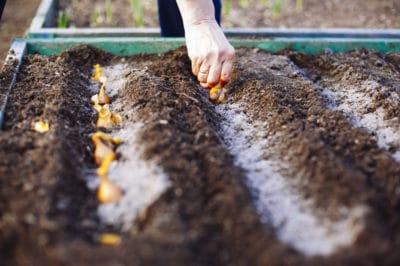Prepare the Soil
Onions and other allium like leeks, garlic and shallots require full sun and well-drained soil. The best soil for onions is nutrient rich with organic matter. If you have packed garden soil, consider a raised bed with 2-3 inches of compost tilled into the soil. Raised beds also have good drainage to prevent mold and fungus growth.
Your soil should also have a pH range of 6.0 to 6.5. You can test your soil at home of submit a sample to your states Department of Agriculture for analysis. If your soil is acidic, add lime to neutralize the acid before planting your onions.
Choose Onion Variety
For fall planting in a southern climate, choose short day onion varieties. Long day varieties are best for cooler, northern climates for growing in the summer. The following short day onions are recommended for fall planting:
- Grano
- Texas Supersweet
- Granex or Vidalia
- Candy
- Evergreen Bunching
Planting Onion Seeds
If you’re planting onion seeds in the fall, you can start them from the middle of September to late in October. Follow these steps for planting your seeds:
- Dig furrows about one-half-inch deep and 2-feet apart.
- Sow the seeds 1-inch apart, or eight to 12 seeds for every foot.
- Keep the soil moist to promote germination.
- Thin the onion seedlings to about 3-inches apart when the onion stalks are pencil size.
- Weed around your onions as needed. Applying organic mulch around your onions help control the weeds.
If you plant green onions, you’ll have plenty of scallions within one month. You can plant green bunching onions every couple of weeks right through the end of October for a continuous supply of green onions.
Planting Onion Sets
If you decide to plant onion sets for a spring harvest, dig your furrows in rows about 2-feet apart. Plant your onion bulbs about 1-inch deep. Allow the onion tops to just show through the soil. Water the onion bed regularly for the best bulb growth. Don’t allow the bulbs to sit in any standing water because it can cause the bulbs to get soft and rot.
